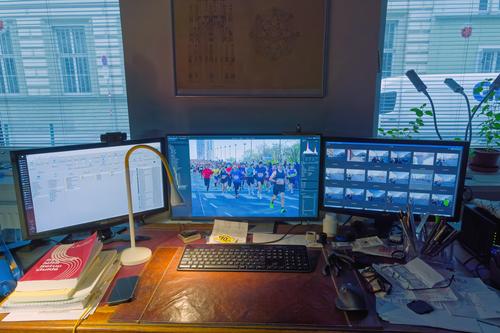David,
Generally, the newer Canon cameras make very good JPEG files in camera. I was reading from some comments from people at Dpreview that they are so good, that some no longer feel that RAW is worth it (for the extra time it takes to make them). Without any distinct artifacts, blurriness or banding etc. I think the photos are fine. Yes, other camera and lenses are better than what I use, but most people would not have any complaints about them. I do have to be careful with sharpening in post, although. I have found that the full frame Canon RP and R8 are so good that sometimes any light sharpening in post is too much. I noticed that with the crop sensor Canon cameras that light sharpening during resizing is OK, especially on cloudy days. But again the resized images are only a general idea of what we could expect when making a print. I remember once making a letter sized print of my 3 megapixel Kodak image (in-camera JPEG) on a sunny day. I was blown away at the sharpness. It was of some waves crashing on some rocks at the beach. I'll never forget that...how good it looked with so few pixels.
Mocha used to post photos at here on this thread many months ago. He suggested that I try using one of the Canon ink tank printers. That has worked out very well. Other printers all failed for one reason or another. But this one, has given me dozens of nice images. The model no. is G7020. It sips ink from the tanks. Do you make prints also? You should try making prints from your Leica and Canon cameras of the same thing. Would you see any differences?
Yes, you are right. I've heard the Canon 24-240mm lens is excellent. If I see one for a good price I may get it. I bought the refurbished Canon RF 100-400mm lens for only $399 (USD) last autumn. So that has given me some extra focal length range at the moment for my R series cameras. I also use my Canon DSLR cameras too with the Tamron 150-600mm lens for wildlife (giving me 960mm equivalent).
That's interesting that you mentioned the weight. Yes, that's a very good point. For me, I've found the Canon RP and R8 to be very light with the lenses I use. But that's relative to the more heavy Canon T7i (800D) camera that I use with the Tamron 150-600mm lens. With that telephoto lens I've learned to cradle it like a baby or keep it in my side camera bag. The first day I used that heavy lens, I was using it incorrectly. My wrists were sore. But soon after that, I learned to use it in a better way. It gets me so far out, that I love it. I tolerate the heavy weight because of the value I get from it. But the mirrorless systems (cameras and lenses) are much lighter, so we can appreciate why people may choose them.
Your Leica camera is wonderful. I love seeing your images from it. 😀
Oh...some other trivia...do you know that the Canon RF 100-400mm lens weighs 115g less than the Canon RF 24-240mm lens? That's per CameraDecision on the internet. The Canon RF 100-400mm lens only weighs 635g (1.4 pounds). On something like the Canon R7 or R10 that lens would give us 640mm equivalent at the long end.

